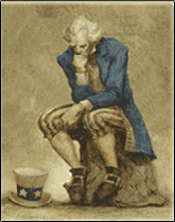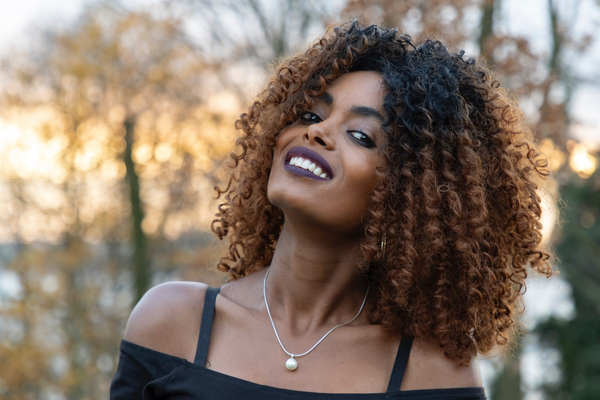
–>
August 6, 2022
In woke ideology, the strongest evidence of a community’s oppression is the personal recitation of lived experience. Among an individual’s experiences, what could be more intimately felt than what one chooses to wear?
‘); googletag.cmd.push(function () { googletag.display(‘div-gpt-ad-1609268089992-0’); }); }
A frequently claimed form of oppression is white European fashion preferences. The search term “white beauty standards” brings up suffering-focused results: “How White Beauty Standards are Hurting Women of Color Everywhere,” “Here’s the Major Problem with White Beauty Standards,” “How White Supremacy and Capitalism Influence Beauty Standards,” etc. “European beauty standards” results include “Eurocentric Beauty Standards: A Global Disease.”
How are minority women oppressed into particular style options? Did owners force enslaved women to iron their hair? Were there Jim Crow laws requiring salons to enforce white styles? Considering decades of federal anti-discrimination laws, how are white beauty standards enforced today?
The first American female self-made millionaire was Madame C.J. Walker. She was not just the first American black woman millionaire, she was the first American woman millionaire, period. Born in 1877 on the plantation where her parents had been slaves, she was hired in 1905 by Annie Turnbo Malone, a black hair products entrepreneur. Walker’s own hair loss inspired her to develop and sell her own hair products for black women. She became a philanthropist and fixture of the Harlem Renaissance. Search her name online, and the top results are Madame C.J. Walker products available today. Is there a more archetypal Horatio Alger story?
‘); googletag.cmd.push(function () { googletag.display(‘div-gpt-ad-1609270365559-0’); }); }
Black women spend $10 billion on hair weaves. Unlike easy-to-remove clip-on extensions, weave is attached to the head, for periods of 6-12 weeks to 6-9 months. The client’s natural hair is braided tightly to the scalp and covered with a mesh cap. Bundles of human hair or synthetic fibers are glued or stitched in place. Weave is also called a “protective hair style” because there’s no harsh heat or chemicals. Sadly, although hair loss is often hidden with weaves, wearing tight braids and weighty bundles for long timeframes can cause a form of often-permanent hair loss called traction alopecia.
For many black women, hair weave is more than personal fashion. Installing and/or selling bundles is the foundation of businesses large and small. Weave done by a salon or sole proprietor at her or her client’s home takes 3-6 hours. Salons charge $200-1500 for the process and bundles. Natural hair often originates from Brazil, India, and Asia. Straight, virgin hair is the most prized and expensive.
Like hairstyling, nail services are available from salons or mobile businesses, generating over $8 billion a year and endless options for real and artificial nails colors, length, designs and shapes — including the ominously named coffin and stiletto. Extremely long nails are so popular among black women the trend has its own category on TikTok. A Bustle article affirms fake nails as “more than just a manicure for black women.”
A more permanent trend popular among black women is buttocks augmentation, via cosmetic surgery or injections at underground “pumping parties.” Evidence is mounting that butt surgeries are among the most dangerous cosmetic procedures. An article in Allure complains underreporting of damage from “back alley augmentations” happens because clients are mostly black women. However, illegality could discourage customers reporting harm. Allure quotes cultural critic Ashley Ford’s reaction to being told that her small butt was like a white girl’s as “taking something away from my inherent blackness.” Wait! What? A woman oppressed by white beauty standards don’t prefer a flat, white girl butt?
 Black women spend billions each year on weaves. Black men have said for years they hate weaves. Comedian Tommy Sotomayor nicknamed weave-wearing women “hair hats.” The late style consultant, Kevin Samuels’ YouTube channel featured nightly 2-4-hour livestreams promoting lifelong marriage as a goal for the black community, via blunt observations and advice. He started each call, “Rate yourself fresh out of the shower, no makeup, you can’t use 7,” asked height and dress size, if she wanted to be married, and if she preferred a black man (almost all did). Many callers spent more time justifying why they deserved a “high-value man” than listening to suggestions. Yet, even argumentative women who devalued men within the conversation, when asked if they wanted to marry, replied yes — even, “Of course.” Samuels lamented in many videos that only 1 in 4 black women marry, compared to 80% or more during slavery and Jim Crow. He blamed attitudes including ignoring black men’s dislike of fake hair, claw nails, and obesity for current high numbers of never-married black women.
Black women spend billions each year on weaves. Black men have said for years they hate weaves. Comedian Tommy Sotomayor nicknamed weave-wearing women “hair hats.” The late style consultant, Kevin Samuels’ YouTube channel featured nightly 2-4-hour livestreams promoting lifelong marriage as a goal for the black community, via blunt observations and advice. He started each call, “Rate yourself fresh out of the shower, no makeup, you can’t use 7,” asked height and dress size, if she wanted to be married, and if she preferred a black man (almost all did). Many callers spent more time justifying why they deserved a “high-value man” than listening to suggestions. Yet, even argumentative women who devalued men within the conversation, when asked if they wanted to marry, replied yes — even, “Of course.” Samuels lamented in many videos that only 1 in 4 black women marry, compared to 80% or more during slavery and Jim Crow. He blamed attitudes including ignoring black men’s dislike of fake hair, claw nails, and obesity for current high numbers of never-married black women.
If the majority of a society is oppressive to a minority, would the minority voluntarily spend large amounts to conform to that society’s fashion mainstream? If that minority spends large amounts to deviate from typical styles, does that really fit the oppression narrative? My lifelong experience of fashion trends is that we dress like the women we feel close to, and admire, not women we see as enemies.
‘); googletag.cmd.push(function () { googletag.display(‘div-gpt-ad-1609268078422-0’); }); } if (publir_show_ads) { document.write(“
Many styles popular among black women — blatantly unnatural weaves (blond with dark skin, thick braids resembling neon yarn), extremely long nails, butt modifications — are distinctly unlike conventional trends, and preferences of their potential husbands. These are flamboyant, even defiant, displays.
Another style-focused political provocation is the claim that braids are the heritage of black women alone, and “cultural appropriation” on white women (Just ignore the blonde braids of the Valkyries). Even if recently adopted by white women, one woman wearing braids neither stops, nor forces, any other woman to braid her hair. In April 2022, in Boston, a group of girls attacked a woman with braids, after she said she wasn’t white, but Hispanic. In a 2020 video (age restricted by You Tube) a white woman is slapped in the face by a black woman for wearing braids.
Of course tanning is “problematic” as well, because the skin color change isn’t permanent (Aren’t manicures and weaves impermanent, too?). There’s no parallel in white culture for the phenomenon of “colorism,” where blacks ranking other blacks by the shade of their skin, or insulting those with darker skin as “crispy.” From Africa to Ancient Egypt to modern India, locals have created and used skin-lightening products.
Black Americans developed their own hair-straightening products, since the first hair straightening chemical created by Madame C.J. Walker. Her product labels featured a photo with of her with straight hair.
Black women’s spending on fashions, hair, nails and cosmetic procedures are incompatible with oppressive mainstream beauty standards. Would an oppressed group spend more than the bare minimum to conform to the standards of the oppressive majority? A minority’s style varying substantially from mainstream, doesn’t align with the majority inflicting oppression on the minority.
With staggering declines in marriage within their community, there’s reason for frustration and fears about the future. Considering the intimate link between beauty and romance, there is a superficial logic to the idea that the majority’s beauty ideals are having a disruptive effect on the minority. When feeling distressed and thwarted, an outside target can be quite appealing. If there’s a target that is large enough to be blamed for other widespread grievances, all the better.
Image: PxHere
<!– if(page_width_onload <= 479) { document.write("
“); googletag.cmd.push(function() { googletag.display(‘div-gpt-ad-1345489840937-4’); }); } –> If you experience technical problems, please write to [email protected]
FOLLOW US ON
<!–
–>
<!– _qoptions={ qacct:”p-9bKF-NgTuSFM6″ }; ![]() –> <!—-> <!– var addthis_share = { email_template: “new_template” } –>
–> <!—-> <!– var addthis_share = { email_template: “new_template” } –>






